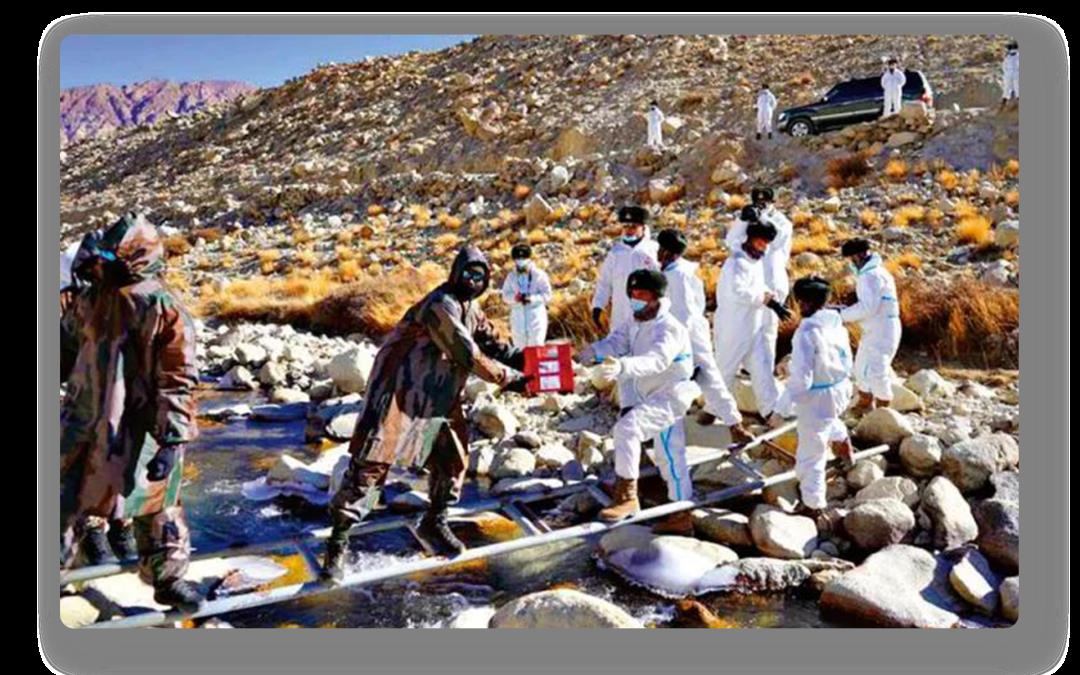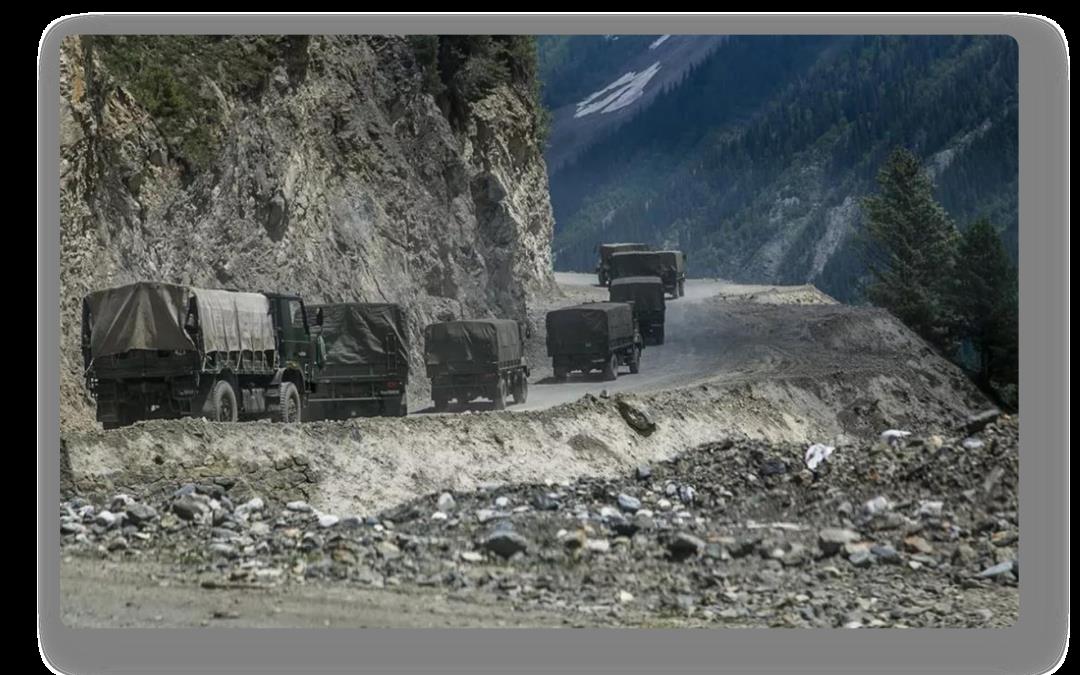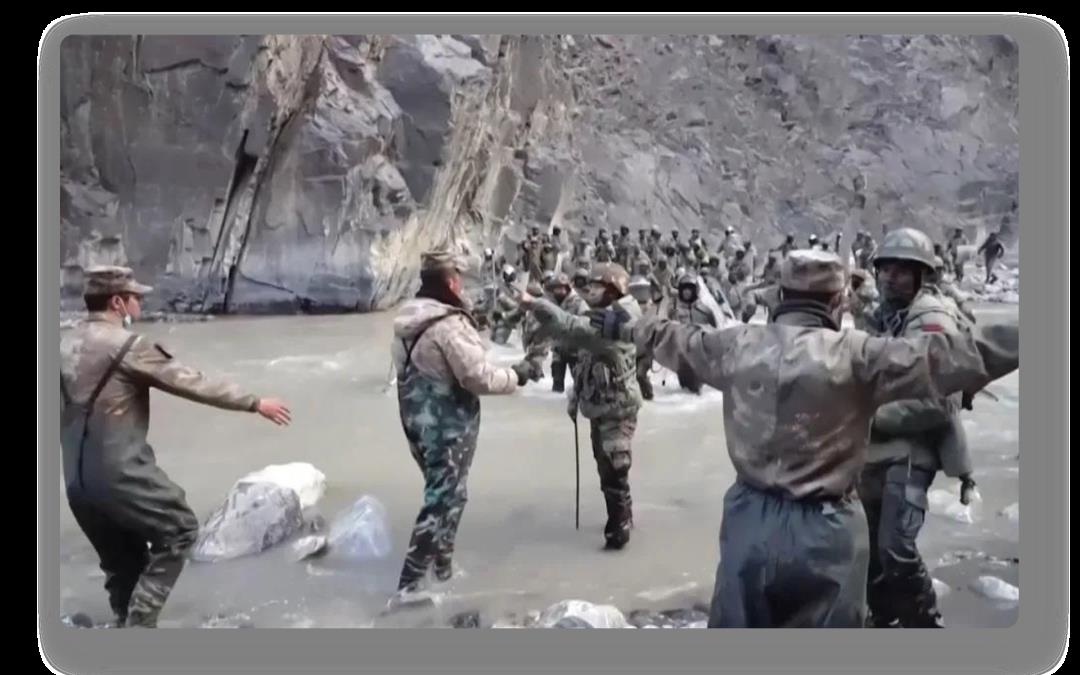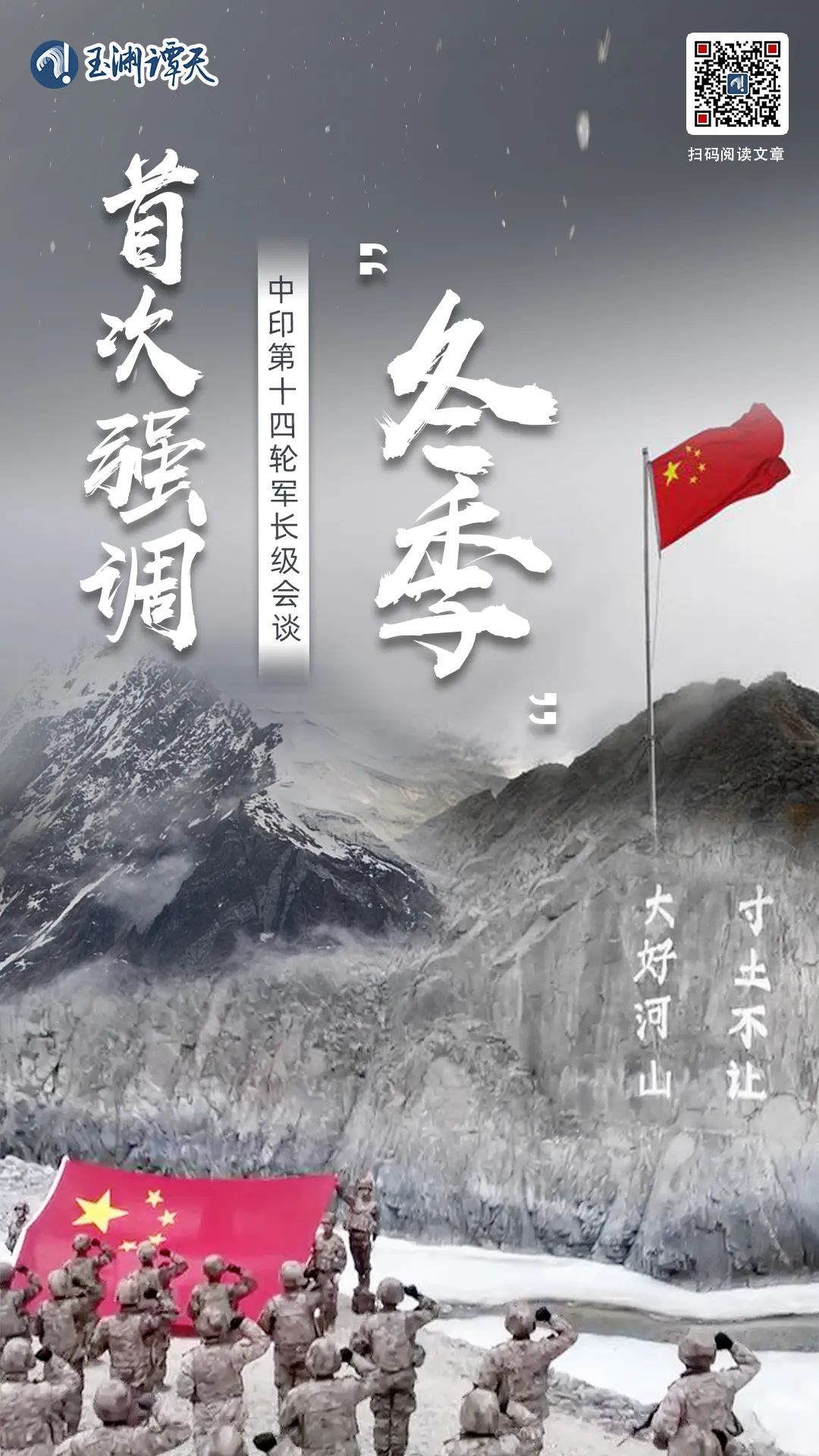On January 12th, the Chinese and Indian armed forces held the 14th round of talks at the commander level on the Chinese side of the Moldo/Chushule meeting point.
Compared with the thirteenth round of talks, the two sides issued a joint press release after this meeting. This is also the sixth joint press release since the China-India military level talks.
The joint press release issued this time mentioned four times in total.agree",three times"as soon as possible”。 Compared with the past, the number of times is the most. Taken together, there is still the will to move in the opposite direction.

▲ On January 1, 2022, Chinese and Indian soldiers exchanged greetings and exchanged candy at the border.
Master Tan also found that this press release emphasized one word for the first time — —"Winter".
The original words are: "The two sides agreed to continue to consolidate the existing achievements and take effective measures to maintain the security and stability of the western region, including winter."
Through this word, we can see that although China and India have not made progress on the border issue at present, they have reached a consensus on solving the problem in a peaceful and stable way, and we can also see several other aspects of the Sino-Indian talks.

As early as the end of last year, the Indian media revealed that India took the lead in proposing to hold a new round of talks at the commander level as soon as possible.
Lin Minwang, a researcher at the Institute of International Studies of Fudan University, told Tan Zhu:
"One reason for India’s initiative is the arrival of winter. The Indian side hopes that both sides will freeze the status quo in winter and take no action. "
For India, winter militaryThe logistics pressure is great., make it difficult to continue at loggerheads with China at the border.
At present, India has tens of thousands of soldiers deployed in eastern Ladakh. In order to cope with the cold weather in the plateau, the Indian army needs to spend 1.5 million rupees (equivalent to about 130,000 yuan) for each soldier to maintain its combat effectiveness in the plateau. Altogether, it costs a lot.
An Indian military logistics expert calculated that the Indian army needs to allocate at least 80 kinds of materials, including rations, winter uniforms, a large number of kerosene, diesel oil, gasoline, etc., and it needs about 500,000 tons of supplies throughout the winter.

▲ An Indian Army convoy carrying reinforcements and supplies went to Liecheng.
Not to mention the financial pressure, even if India has the money to raise 500 thousand tons of supplies, it is difficult to deliver them to the border in time and effectively. as a result ofBackward infrastructure.
A village on the Indian border didn’t install the first mobile phone tower until November 2021, and it still lacks infrastructure such as roads, electricity and medical care. Indian media also made a special report, saying that India’s infrastructure can’t be compared with China.
Insufficient logistics support in winter has always been a headache for the Indian army. In 2020, the Indian army began to prepare winter logistics support from summer. However, in order to reduce the pressure of raising and transportation, it was considered to reduce the weight of rations from 2.5 kilograms per person per day to 1.5 kilograms on the basis of ensuring the basic calories of food. But even so, the supply pressure is not small.
Continued confrontation, India obviously can’t keep up.

Commitment to smooth communication channels and continue to seek solutions to problems as soon as possible. For India’s attitude, Lin Minwang analyzed:
"China has also responded in the opposite direction. After all, the two sides are neighbors who can’t move away, and the border issue can’t be solved for a while. It will take time to slowly correct some unreasonable expectations in India."
Before this meeting, India did inject some goodwill.
According to Indian media reports, despite the pressure from many NGOs, the Indian government has made a decision to support the Beijing Winter Olympics, which is in line with the Indian government’s "neighborhood priority" policy.
As early as 2014, "Neighborhood priorityPolicy has become one of India’s core foreign policies. According to Hu Shisheng, director of the South Asia Institute of China Institute of Contemporary International Relations:
“‘ Neighborhood priority ’ One of its manifestations is to build a stable relationship with neighboring countries. As a developing country close to China, it is difficult for India to bear a series of negative consequences of the complete hostility between China and India. "
Before the talks, it was also reported that India may ease restrictions on some foreign direct investments next month, including China.
Correspondingly, it is a milestone breakthrough in the trade volume between China and India — — In the first 11 months of 2021, the trade volume between China and India exceeded 100 billion US dollars. The Indian Foreign Secretary also stated not long ago that the Indian government is firmly committed to putting India-China trade relations on a more sustainable basis.
However, we should also see that the atmosphere of taking a step forward is only compared with the previous talks.
Before the 13th round of China-India talks at the commander level, the Indian media spread rumors and exaggerated that the PLA had crossed the line. After the talks, the Indian side blamed China for the stalemate.

Even now, India’s small moves have not stopped.

▲ On January 5, 2022, India recovered 6.53 billion rupees from Xiaomi on the grounds of illegal tax evasion.
Last week, India issued a sky-high "fine" to China’s Internet companies, and India recently tested supersonic cruise missiles.
We must also see clearly that India has "It will be noisy after winter."The possibility.
All along, India hopes to occupy as much territory as possible and win the so-called "victory" by nibbling away at it without war.
For this mentality in India, Lin Minwang told Tan Zhu:
"India will not look at things from a longer-term perspective. India’s military and diplomatic personnel are more accurate in calculating small abacus, but the direction of big abacus is not accurate. China has solved the land boundary problem with 12 of the 14 neighboring countries. No country needs to talk about so many rounds, so India needs to reflect on its own problems. "
To improve the Sino-Indian border issue, India must change its position on the border.Basic cognition.

▲ Conflict scene in the Central Inca Gallowan Valley
China and India are moving in the opposite direction to maintain border peace, which is in line with the interests of both countries and the international trend. But some people don’t want to see such a situation.
The South Asia Briefing published by the American Foreign Policy magazine on the 13th mentioned this talk, and between the lines, it was shaping the China threat.
Before the talks, White House spokesperson Psaki deliberately took China’s "coercion" and stressed that he would continue to work with India.Stand together”。
Unfortunately, India didn’t want to stand with the United States in everything.

Although the United States clearly supports India on the border issue, the Indian media bluntly said that the United States is keen onsabotagePeace between China and India.
Because the strategic purpose of the United States is obvious: I hope that the two neighboring countries will consume each other, because this is in the best interest of the United States — — When India buys more American weapons and equipment against China, it will be able to move closer to the United States strategically.
For the move of the United States, Hu Shisheng analyzed:
"India does not want the border issue to be internationalized, and it also opposes the United States’ intervention in the Sino-Indian border issue. The Sino-Indian border issue itself is very complicated, and adding a third party will only make it more complicated. At this point, China and India have the same attitude. "
The Sino-Indian border issue is indeed still complicated, which is why the joint press release emphasizes "Have a frank and in-depth exchange of views",which is why India particularly emphasized that" although there was no breakthrough in the talks, the two sides agreed to continue the talks. "
No matter how complicated the situation is and how many rounds the two sides have to talk about, for China, the bottom line has always been clear:
Great rivers and mountains, not an inch of land.

关于作者